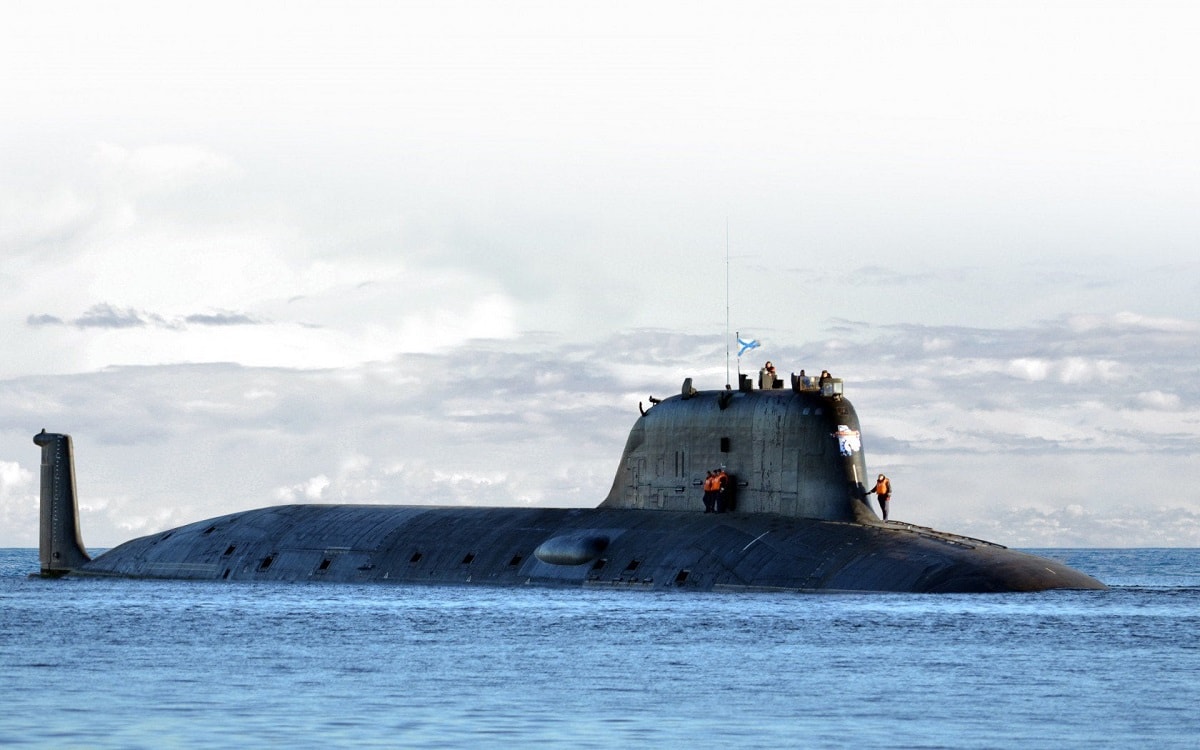The Yasen-class of submarines built by Russia are some of the most dangerous on the planet and make the US Navy very nervous. What makes these underwater weapons of war so dangerous? Russia is using long-range precision strikes from submarines to destroy Ukrainian coastal bases and hit civilian targets. This role has fallen to Yasen M-class nuclear submarines. By adopting these practices in the war in Ukraine, the Yasen has added a new dimension to undersea warfare – moving away from anti-submarine or anti-surface ship attacks, and instead crushing facilities on land.
The first new Yasen M-class sub, Kazan, joined Russia’s Northern Fleet in early 2021. Seven more submarines are in various stages of assembly.
A Submerged Missile Truck
The newest Yasen-M submarines are on the large side. At 393 feet in length, they displace 13,800 tons. They can dive down to an impressive 2,000 feet. The Yasen M is also fast, capable of traveling at 35 knots. The new subs come with updated electronics, and their nuclear reactors are quieter than the earlier Yasen-class boats. The reactor has a service life of 30 years.
The Yasen-M can carry Kalibr land-attack cruise missiles and Oniks anti-ship cruise missiles. Ten vertical launchers allow the vessels to carry 72 missiles. The nuclear-capable Kalibr, comparable to American Tomahawks, is the weapon that is harassing Ukraine, but the subs can also launch the Tsirkon hypersonic cruise missile. The Yasen-M carries 30 torpedoes with 10 torpedo tubes, and these are designed to take out aircraft carriers.
This class of Russian submarines has a rubber coating that helps absorb sonar pings and deaden noise. The double-hull model of earlier Yasen-class submarines was traded in for a single-hull design.
According to Raymond McConoly of the Naval Post, “the Yasen-M design is quieter than the leading Yasen-class submarine. In addition, it is constructed using low magnetic steel to minimize its magnetic signal, making it far more difficult to detect. Unlike prior Soviet vessels, the Yasen class are multi-mission vessels comparable to the American Seawolf or Virginia classes.”
The Yasen-M has spherical sonar on the bow and flank. It also tows a sonar array for sensing to the aft of the sub, and it comes equipped with surface and navigation search radar.
The Full Spectrum of Threats
The Yasen-M is a significant asset for the Russian navy. It has a flexible attack repertoire that allows it to adapt to any mission. Torpedoes can target enemy subs and surface ships. Cruise missiles are available for land-attack missions. Hypersonics evade enemy missile defenses, and nuclear capability is assured if the unthinkable is needed.
The mission in Ukraine is currently land-attack. But the Yasen-M is a full-spectrum threat, not only to the Ukrainians, but also to the United States and NATO. It could sneak close to American shores and launch missiles in a kinetic attack. This makes the Yasen-M more of a missile carrier than a submarine that interdicts shipping or engages other submarines.
The sub can also take a stand-off role so as to not encroach on another country’s sovereignty. The Kalibrs have enough range for the Yasen-M to fire them while perched outside of territorial waters.
The Yasen-M is a stalwart force. It tops U.S. admirals’ list of concerns when considering undersea warfare. The Russians want to destroy vital enemy infrastructure from the sea, and Ukraine will be a test of how accurate these attacks can be.
Now serving as 1945’s Defense and National Security Editor, Brent M. Eastwood, PhD, is the author of Humans, Machines, and Data: Future Trends in Warfare. He is an Emerging Threats expert and former U.S. Army Infantry officer. You can follow him on Twitter @BMEastwood.

